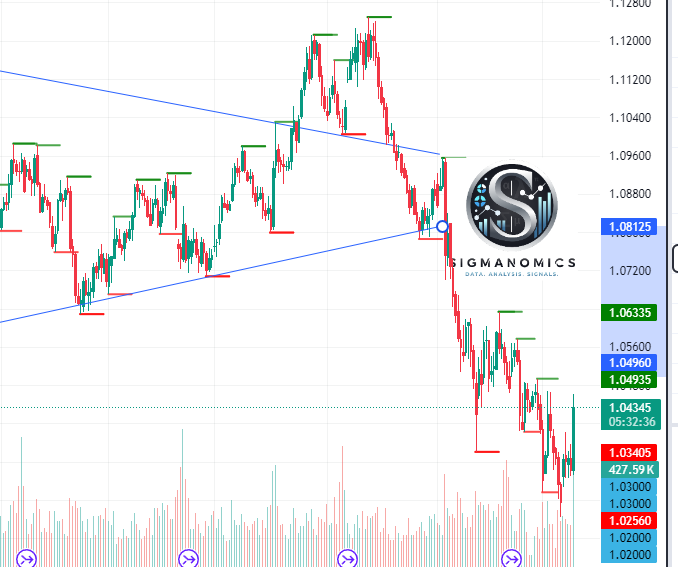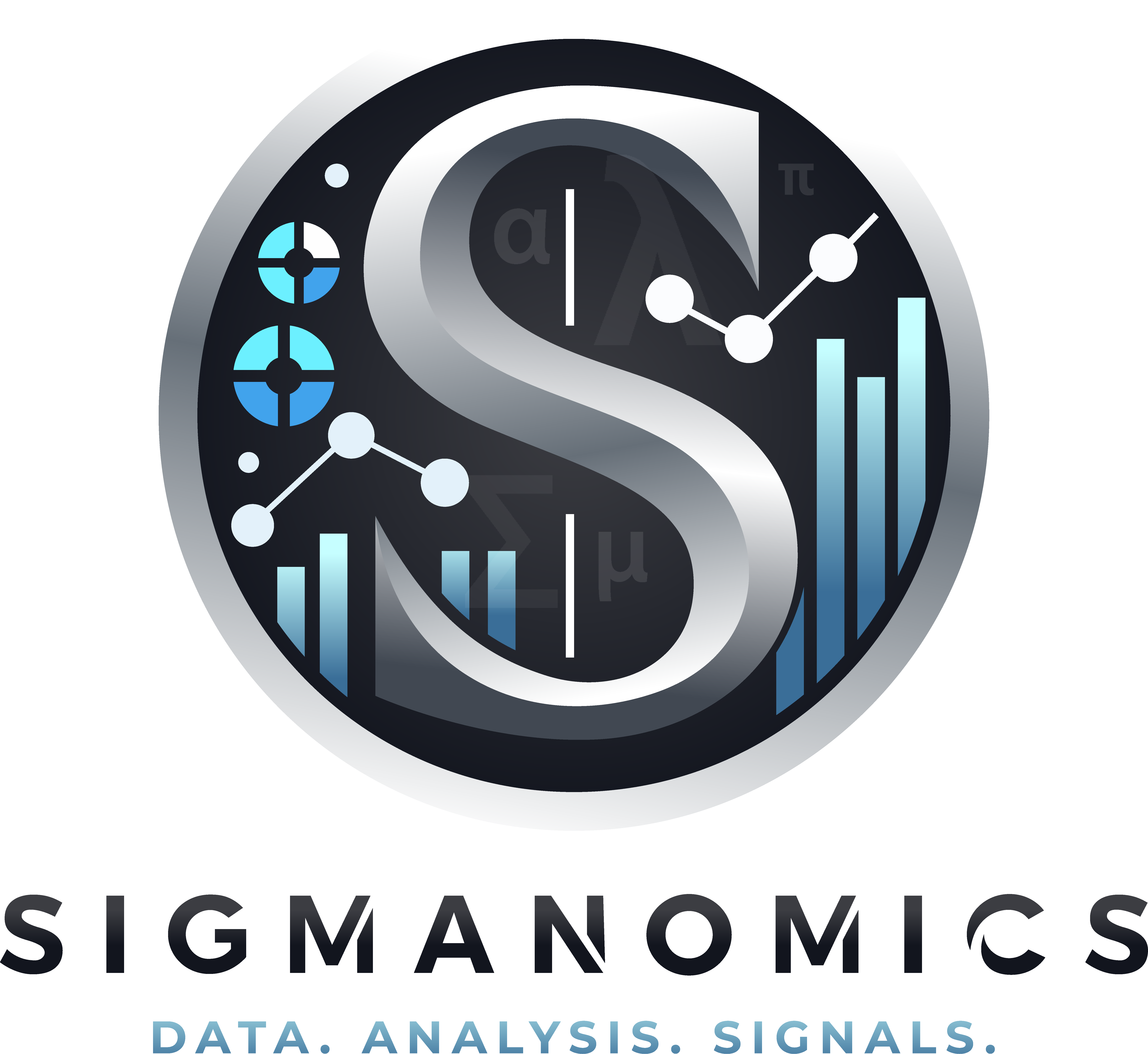The EUR/USD currency pair, one of the most closely followed in global forex markets, is at a critical juncture as 2025 begins. A confluence of chart signals, Eurozone economic data, geopolitical developments, and evolving analyst forecasts points to significant potential shifts in its trajectory. Here’s a deep dive into the latest movements, trends, and projections.
Chart Analysis: Bearish Momentum Easing?
The attached chart illustrates a sharp bearish trend for the EUR/USD that dominated much of late 2024. Key technical insights include:

EUR/USD Daily Chart, Sigmanomics
- Descending Triangle Breakout: The pair broke below a key support level near 1.0800, triggering a sharp downtrend that saw EUR/USD touch the 1.0300 level.
- Volume Divergence: The declining momentum near recent lows, coupled with decreasing trading volume, suggests bearish exhaustion. This aligns with a short-term rebound to 1.0345.
- Resistance Levels: The immediate resistance lies at 1.0490 and 1.0630, both marked by previous failed attempts at recovery. A break above these could signal the start of a trend reversal.
- Support Levels: Strong support is present at 1.0300 and 1.0250, levels that traders are watching closely for potential buy-side activity.
Eurozone Economic Snapshot
Key Indicators
- GDP Growth: The Eurozone recorded 0.4% GDP growth in Q3 2024, a slight improvement that highlights resilience amid global economic uncertainty. However, growth remains fragile as manufacturing lags.
- Inflation: (Eurozone inflation) rose to 2.4% in December 2024, signaling stabilization around the ECB’s target. However, core inflation pressures persist, driven by energy price volatility.
- Unemployment: At 6.3%, the Eurozone’s unemployment rate is at its lowest since 2008, reflecting a robust labor market.
- Trade Balance: The Eurozone’s trade surplus increased to €18 billion in November 2024, buoyed by stronger exports, particularly from Germany.
These indicators paint a mixed picture: while inflation and trade offer optimism, growth concerns linger, keeping policymakers cautious.
Current Events Driving the Market
1. Monetary Policy Divergence
- The (U.S. Federal Reserve) remains committed to a hawkish stance, with rates expected to stay elevated throughout 2025. In contrast, the European Central Bank (ECB) has signaled potential easing measures should growth falter. This divergence keeps upward pressure on the USD, capping EUR/USD gains.
2. Geopolitical Risks
- The ongoing political uncertainty in the U.S., marked by new trade policy initiatives, has added complexity to global forex markets. Renewed tensions with China and shifts in trade terms with the EU could further strengthen the safe-haven appeal of the USD.
3. Global Energy Prices
- The Eurozone’s heavy reliance on imported energy makes it vulnerable to price shocks. Any upward momentum in oil and gas prices could weigh on the euro, especially as winter energy demand persists.
Analyst Forecasts for EUR/USD
Short-Term Outlook
Analysts forecast EUR/USD to trade within a tight range of 1.0300–1.0500 over the next few months. Key drivers include:
- Resistance from Rate Differentials: The Fed’s rate advantage over the (ECB) is expected to limit euro strength.
- Technical Bounces: A temporary rebound to 1.0500 is possible if key resistance levels are broken.
Long-Term Projections
By year-end 2025, the consensus suggests EUR/USD could approach 1.1000, driven by:
- Economic Convergence: Analysts expect a narrowing of growth and inflation differentials between the Eurozone and the U.S.
- Stabilizing ECB Policies: A return to more balanced monetary policy could support the euro in the latter half of the year.
Conclusion: Volatility Ahead for EUR/USD
The EUR/USD pair finds itself at a crossroads, with significant influences from both technical and fundamental factors. In the short term, bearish risks dominate, with critical support at 1.0300 being watched closely. However, longer-term projections hint at recovery potential as economic convergence and easing pressures on the euro emerge.
Market participants should remain vigilant, closely monitoring key events, including upcoming ECB and Fed policy decisions, geopolitical developments, and energy market fluctuations. For now, EUR/USD continues to trade in a fragile balance—offering both risks and opportunities for traders and investors.





